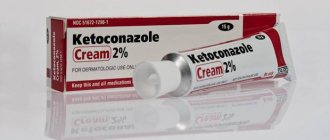The skin of an infant is significantly different from the skin of an adult. It is thinner and more delicate, sensitive, prone to allergic reactions. It is rare to find a baby with perfectly even and smooth skin of a pinkish tint.
The biggest cause for concern for young mothers and fathers is the condition of the child's skin, when the blood vessels form a pattern reminiscent of the appearance of marble. This is marbled skin in a baby, the reasons for which can be different. This condition of the skin can be physiological or be one of the symptoms of diseases of the heart, blood vessels, and nervous system.
What is marble leather
Marbling of the skin in a newborn is not uncommon. Thermoregulation in newborn babies is imperfect. The circulatory system is just being rebuilt to work independently without the maternal placenta. Vessels and small capillaries are located too close to the surface of the skin. Under the influence of a wide variety of external factors (for example, temperature changes), some vessels can expand, while others can narrow. Through the skin, dilated vessels appear red, narrowed vessels appear blue. The color of the cover can be pale or reddish. This is how a marble pattern is formed.
Most often, marble mesh appears when the temperature in the room is cool at the time of changing clothes.
In some children, this skin color may also indicate serious abnormalities (intracranial pressure, cerebral edema, or disorders of the central nervous system).
Marbling can occur over the entire area of the body or in individual areas (cheeks, arms or legs).
Marbling is most often observed in children who have inherited light, pale skin from their parents. Dark-skinned babies rarely have this feature.
Symptoms
Marbling itself is not considered a pathology. This condition is always assessed in combination with other possible pathologies and conditions.
The mother should be alerted to the accompanying symptoms, which indicate various pathologies of internal organs:
- increase or decrease in body temperature;
- increased sweating;
- increased excitability;
- lethargy;
- tilting the head;
- blue discoloration of the nasolabial triangle;
- pale skin with a burgundy-purple vascular pattern;
- sleep disorders;
- hard breath;
- vomit;
- lack of appetite.
If marbling is constantly present in a baby, then in combination with other symptoms it can be a sign of serious illness.
Among them may be:
- anemia;
- congenital pathologies;
- genetic abnormalities;
- perinatal encephalopathy;
- increased intracranial pressure;
- heart defects, congenital vascular abnormalities;
- rickets.
A reminder for all parents about marbling of the skin
It is necessary to regularly visit a pediatrician.
To maintain your own peace of mind, it is extremely important to remember some facts verified by experts about such a symptom as marbling of the skin in infants:
- Marbling of the skin is not an independent disease. Most often, this feature is a reaction of the child’s blood vessels to some external conditions or an initial symptom of the disease.
- Marbling of the skin has no consequences for the development of children.
- This phenomenon in a baby can be considered normal until the age of six months, since the vascular system goes through the initial stage of formation.
- An examination by a pediatrician will eliminate any concerns.
- At home, you can eliminate the symptoms of marbling by following general recommendations to strengthen the body.
It is important to note that marbling of the skin is a passing phenomenon, so it does not represent serious reasons for concern.
Child care and regular visits to the pediatrician are the key to the baby’s health and parents’ peace of mind. May your children always be healthy!
Reasons for appearance
The reasons for such color changes are physiological and pathological. Parents should worry only in the second case. And only if there are other signs of pathologies in the development of the newborn.
Physiological reasons, including:
- Imperfection of the vegetative-vascular system. As a result, the baby’s thin and overly sensitive skin quickly reacts to any influence. Most often, marbling can be seen when changing the baby's clothes, in cool weather at home or outside. For the skin color to return to normal, it is enough to dress the child warmly. It may also appear during heavy crying. This condition does not require any treatment. For physiological reasons, marbling occurs periodically in newborns up to about six months of age. During this time, the vascular system will become stronger, and the amount of subcutaneous fat in the baby will increase. This process may take a long time, but after six months, physiological marble mesh is already a rarity.
- Breastfeeding for a long time. In order to get milk from the mother's breast, the child makes a lot of effort. In this case, small vessels are overloaded, they are constantly in a distended physiological state, so the blood in them is clearly visible through the skin.
- Fever. When a child's temperature rises to 39 degrees or higher, the skin may acquire a marbled tint. In this case, heat transfer is disrupted and a spasm of blood vessels occurs. This is the so-called white fever - a condition in which, against the background of a high temperature, a spasm of peripheral blood vessels occurs in a child. A child with a high temperature will have cold feet and hands, and a marble mesh may appear on the body.
Marble color does not stay with the child for life. In some children it goes away within a few months, and in others it goes away after a few years.
According to statistics, marbled skin coloring is often found in children living in areas with cold climates.
If marbling on the baby’s body persists constantly and covers the entire body, consultation with a pediatrician, cardiologist and neurologist is necessary.
It happens that marbled skin appears in a baby due to some pathological processes in the body. Moreover, it appears regardless of air temperature, lasts a long time and occurs periodically after the age of one year.
Pathological causes of the development of marbled skin color that require special treatment:
- Autonomic dysfunction. In this case, the physiological tone of blood vessels is disturbed, most often due to prolonged labor, when the cervical spine and brain are subject to additional stress compared to normal childbirth. Premature babies are also susceptible to this problem.
- Heart diseases. Children who have a marbled color are sent for examination to a neurologist and a cardiologist to identify possible cardiovascular abnormalities.
- Heredity. If one of the baby’s parents suffers from vegetative-vascular dystonia (impaired vascular tone), then it will be inherited by the child. If marbling goes away quickly and does not affect your well-being, then vegetative-vascular dystonia does not require special treatment. You just need to teach your child from a very early age to a healthy lifestyle and nutrition. A proper daily routine, hardening and sports activities will help.
- Intrauterine hypoxia of a child during gestation negatively affects the entire blood circulation, which affects the development of various pathologies in newborns
- Anemia and hypoxia in a child during pregnancy. These factors negatively affect the child’s blood circulation, causing the disease even during intrauterine development. Even short-term hypoxia during pregnancy or childbirth can lead to possible neurological problems in the child, including vascular disorders in the form of marbled skin.
- Such unusual skin may accompany a cyst or dropsy of the brain, heart defects, or encephalopathy acquired during the perinatal period. Marbling in this case is similar in appearance to gray marble, the skin is pale, the vessels are narrowed, and the vascular network is blue. The skin is cool most of the time and prone to sweating, and the nasolabial triangle is often bluish in color. Almost all diseases that are accompanied by this skin color are easily diagnosed in the early neonatal period. And parents, as a rule, learn about such diseases either in the maternity hospital or during the first visit to the pediatrician.
- Down syndrome. In such children, a reticular pattern is a very common phenomenon.
True marbling syndrome is extremely rare. This is a rare congenital disease associated with vascular pathology. Since 1970, there have only been just over 200 cases of true marbling reported worldwide. In addition to the unusual appearance of the skin, this disease causes other changes in the child’s body. All of them are diagnosed immediately after birth. Among them: microcephaly of the brain, giant nevi, including flaming nevi. In addition to marbling, the child has asymmetry of the face and body, limbs, and serious pathologies in the structures of the brain and central nervous system. The skin with this disease has a permanent purple tint. The vascular network is very clearly visible. This disease has been studied very little in Russia; all studies were carried out mainly in the West, although even there it is difficult to make predictions about congenital marbling - there is too little practice.
If all pathological signs are detected in the baby, you must contact a pediatrician, who will prescribe an additional examination. Most pathologies of internal organs are easily corrected with medications, especially if the disease is detected at an early stage of development.
Diagnostics
If you notice signs of marble mesh in a baby, you don’t need to panic, but you also can’t ignore such a sign. It is necessary to find out what contributes to the appearance of the marbled pattern and inform the pediatrician about it.
If the child’s condition worsens or there are other pathological symptoms, then you need to consult a doctor as soon as possible.
Having assessed the baby’s condition, the doctor prescribes consultations with a cardiologist, pediatric neurologist, rheumatologist, ultrasound examination of the heart and blood vessels, ultrasound of the brain or MRI (if the fontanel is tightened). Diagnostic methods also include electrocardiogram and encephalogram. You may need to consult a dermatologist.
Pathological causes of marbling
Marbled skin can be a symptom of anemia
Despite the harmless features in the difference in skin tones in infants, there are some conditions and reasons that need to be addressed at the initial stage in order to avoid the development of more serious diseases and eliminate alarming symptoms.
In a situation where physiological factors have been eliminated, and the marbling of the baby’s skin does not go away, you need to consult a doctor. This is explained by the fact that marbled skin can be a symptom of the following diseases :
hereditary and genetic diseases with a predisposition to vegetative-vascular dystonia. A hereditary factor explains the appearance of symptoms of any disease;
anemia. This disease affects the circulatory process;
congenital heart diseases. In this case, the child needs to be examined by a neurologist and cardiologist to exclude pathological changes in the cardiovascular system of the body.
Thus, it turns out that marbling of the skin in children, for a number of pathological reasons, does not go away on its own in a short period of time. Then there is a need for observation by a doctor and treatment, the duration of which depends on the identified disease.
Treatment
In most cases, marbling in a baby does not cause serious consequences and goes away as the baby grows up. Physiologically conditioned marbled skin does not require treatment. As the child grows, the autonomic nervous system becomes stronger and begins to regulate the condition of the blood vessels. And the skin takes on a normal pink color.
A neurologist should be contacted immediately if marbled coloration is accompanied by the following concerns:
- crying for no reason;
- irritability;
- sleep and appetite disturbances;
- blue discoloration of the nasolabial triangle.
These phenomena may indicate serious illness.
If marbling in a newborn is associated with pathologies, it is necessary to determine the specific source of the problem. A full examination of the baby should be carried out and individual therapy prescribed if necessary.
Treatment will depend on what specific disease is detected. Many problems with blood vessels and the heart can manifest themselves at an early age as marbling. They require immediate or delayed surgical treatment.
In conservative therapy, vascular drugs, vitamins, and physiotherapeutic procedures can be used. The main goal of treatment is to increase blood microcirculation and strengthen the walls of blood vessels. Most often, pathological marbling of the skin goes away after the main cause that caused the problems with blood vessels is eliminated.
There is no reliable data on the treatment of congenital true marbling, since medicine has not yet developed effective and proven methods of treating this rare disease. There are only hypotheses and theories.
Newborn skin
09.12.2020 2157
For non-pediatricians who “caught” a child up to 1 month of age. What is normal and what is not. About the original lubricant and other “waxes”.
Vernix caseosa - diagnosis, treatment
The term “vernix” has the same root as the word “varnish” (translated from English as varnish, gloss, gloss) and refers to a grayish-white coating on the skin of newborns, which consists of exfoliated epidermis of the fetus and the secretion of the sebaceous glands.
Epidemiology of vernix. Age: newborns. Gender: Doesn't matter. Prevalence: Occurs in all infants. Pathophysiology of vernix The vernix is believed to protect the skin of newborns from water and microbes.
Physical examination of vernix
Appearance: A sticky substance with a cheese-like consistency that dries and flakes off after birth. Color: from gray to white. Localization: all over the skin. Differential diagnosis of vernix The vernix in general has a very typical appearance, but it must be distinguished from other film-like membranes, such as collodion and Harlequin fruit. In these two pathological conditions, the membranes are thicker, immobile and dry.
Course and prognosis of vernix lubrication. In a healthy baby, the vernix is separated from the skin within 1-2 weeks. Treatment of vernix No treatment is required. Most of the vernix is usually removed at birth. The remaining part falls off during the first weeks of life.
Modern recommendations for caring for a newborn:
1. Complete immersion of the child in water when washing until the umbilical wound heals is not recommended.
2. At birth, blood and meconium can be removed with warm water and cotton balls.
3. Umbilical cord care and cutting techniques vary. Some methods include topical application of alcohol (alcohol rub), antibiotics (bacitracin, polysporin, or neosporin), or silver sulfadiazine cream (Silvadene) to the area at each diaper change. The umbilical cord usually falls off within 7-14 days.
4. Until the umbilical cord/cutting site heals, partial treatment with cotton balls and warm water is recommended. After the open wounds have healed, the child can be carefully immersed in warm water, washing “from head to toe.”
5. It is advisable to avoid using scented soaps and bubble baths. Fragrance-free and soap-free detergents are the least irritating. Other cleansers can only be used on contaminated areas and should be rinsed off immediately.
6. After bathing, the baby's skin must be dried with blotting movements without wiping it. The vernix may remain for several weeks. Topical use of moisturizers is generally not recommended.
Marbled skin - diagnosis, treatment
Marbled skin - physiological red-blue mesh spots on the skin of newborns. They are observed with an immature physiological response to cold and manifest themselves in the form of dilatation of capillaries and small venules. Changes in the skin usually disappear with warming, and the phenomenon regresses as the child grows older.
Note! While marbled skin is mostly a normal variant, its adult counterpart, livedo reticularis, may be associated with connective tissue and vascular diseases. Epidemiology of marbled skin Age: Onset during the first 2-4 weeks of life with exposure to cold. Gender: Doesn't matter. Prevalence: more common in premature infants.
Pathophysiology of marbled skin. This process is believed to be associated with the immaturity of the autonomic nervous system of newborns. The reaction is a physiological norm and disappears as the child grows older. History of marbled skin Reticulate spots that disappear when warmed.
Physical examination of marbled skin. Type of rash: mesh spots. Colour: reddish blue. Localization: diffuse location, symmetrical on the trunk and limbs. Differential diagnosis of marbled skin With marbled skin, the prognosis is favorable; this disorder is self-limiting. It can be confused with congenital telangiectatic marmorated skin (CTMC), a more severe condition that can also appear at birth as a reticulated vascular pattern. This is a rare, chronic, recurrent vascular disease that leads to permanent scarring of the skin.
Course and prognosis of marbled skin. Relapse after the first month of life is not typical. Persistence of symptoms beyond the neonatal period is a possible sign of trisomy 18, Down syndrome, Cornelia de Lange syndrome, hypothyroidism, or TCH.
Treatment and prevention of marbled skin. Symptoms usually resolve on their own.
Neonatal hair loss - diagnosis, treatment
Neonatal hair grows actively at birth in the anagen phase, but during the first few days of life it enters the telogen phase (the last period before hair loss). Therefore, severe hair loss during the first 3-4 months of life is normal.
Note! Sometimes parents complain that the cause of hair loss is sleeping in a supine position. But sleeping position only enhances normal hair loss and is not the cause. Synonym: telogen effluvium.
Epidemiology of neonatal hair loss. Age: newborns, observed from 3 to 4 months. Gender: Doesn't matter. Prevalence: Occurs to varying degrees in all infants.
Pathophysiology of neonatal hair loss. There are 3 phases in the hair development cycle: 1. Anagen (active growth phase, usually lasts from 2 to 6 years). 2. Catagen (short partial phase of degeneration, which lasts from 10 to 14 days). 3. Telogen (resting phase and hair loss, which lasts from 3 to 4 months. On healthy scalp, 89% of hair is in the anagen phase, 1% in the catagen phase and 10% in the telogen phase.
Cause of neonatal hair loss. is that most hair from the anagen phase at birth spontaneously transitions to the telogen phase during the first days of life, resulting in hair loss from the entire scalp within 3-4 months.
History of neonatal hair loss. During the first 3-6 months of life, physiological hair loss occurs in newborns. In some cases, new hair growth compensates for hair loss, which can occur almost unnoticed.
Physical examination. neonatal hair loss Type of rash: non-scarring alopecia. Localization: diffuse involvement of the skin of the entire scalp. Differential diagnosis of neonatal hair loss Hair loss in newborns is a normal physiological process that is diagnosed on the basis of clinical and anamnestic data. In the occipital region, alopecia may be more pronounced due to friction and pressure during sleep in the supine position. Course and prognosis of neonatal hair loss In healthy infants, hair loss stops by 6-12 months of life.
Treatment of neonatal hair loss. No treatment required. Parents should explain that hair loss in a newborn is a normal physiological process and that hair will grow back by 6-12 months of life without treatment.
Toxic erythema of newborns - clinic, diagnosis, treatment
Toxic erythema of newborns is a short-term macular erythema with a vesicle in the center, observed in newborns and proceeding favorably.
Epidemiology of erythema toxicum of newborns. Age: newborns. Gender: Doesn't matter. Prevalence: there are no exact data, the development of the disease is reported in 4.5-70% of full-term children, the disease is less common in premature children.
Pathophysiology of erythema toxicum of newborns. The cause of erythema toxicum is unknown. The presence of an eosinophilic reaction as a hypersensitivity reaction is assumed, but it was not possible to identify a specific allergen. History of erythema toxicum of the newborn: Macular erythema with the formation of vesicles and pustules in the center appears between 24 and 48 hours of life.
Clinic of toxic erythema of newborns. Type of rash: erythematous spots 2-3 cm in diameter with the formation of papules, vesicles or pustules 1-4 mm in size in the center. Color: erythematous. Localization: chest, back, face and proximal segments of the extremities, palms and soles are not affected. Diagnosis of toxic erythema of newborns When staining the contents of vesicles using Wright's method, a predominance of eosinophils is revealed. Gram stain will be negative.
Differential diagnosis of toxic erythema of newborns. Erythema toxicum should be differentiated from miliaria rubra and transient neonatal pustular melanosis. The rashes of erythema toxicum are usually larger than those of miliaria rubra and have a wider, lighter border around the periphery. With transient neonatal pustular melanosis, the contents of the vesicle are dominated by neutrophils rather than eosinophils, and healing usually results in residual hyperpigmentation. The results of bacterial and mycological culture studies of rashes with toxic erythema are negative, in contrast to congenital candidiasis and bacterial infections of newborns. Differential diagnosis should also be made with more serious diseases, such as herpes infection and Langerhans cell histiocytosis. However, to clarify the diagnosis of these diseases, which cannot be missed, virological testing and skin biopsy may be required.
Laboratory studies of erythema toxicum of newborns. Wright's staining: Wright's staining of a smear from the contents of the vesicles reveals eosinophilia. Gram stain: the drug is gram-negative. Pathohistology: intraepidermal vesicles filled with eosinophils. Blood test: peripheral eosinophilia up to 20% in some cases.
Course and prognosis of toxic erythema of newborns. Rashes can occur from birth to the tenth day of life; individual elements of the rash regress by the second week.
No treatment is required for erythema toxicum neonatorum.
Transient neonatal pustular melanosis - clinical picture, diagnosis, treatment
Transient neonatal pustular melanosis is a benign disease of newborns that regresses on its own, characterized by the appearance of erythematous macules and superficial vesiculopustules, which regress with the formation of post-inflammatory hyperpigmentation.
Note! Very often, especially in post-term infants, only hyperpigmented spots are detected, and pustules and vesicles are absent. Epidemiology of transient neonatal pustular melanosis Age: newborns. Gender: Doesn't matter. Race: more common in blacks.
Prevalence: 0.2-4% of newborns. Pathophysiology of transient neonatal pustular melanosis Pathogenesis is unknown.
History of transient neonatal pustular melanosis Idiopathic superficial sterile vesicles and pustules that are present after birth within 12-24 hours and regress to hyperpigmented macules that slowly disappear over several months.
Clinic of transient neonatal pustular melanosis. Type of rash: tiny vesicles or burst rashes with a collar of scales. In general, background erythema is minimal or absent. Color: Hyperpigmented spots may develop where vesicles and pustules resolve. Localization: accumulations on the face, trunk and proximal extremities, rarely on the palms and soles.
Diagnosis of transient neonatal pustular melanosis. Neutrophils predominate in the contents of the vesicles when stained according to Wright. Gram stain for bacteria is negative. Differential diagnosis of transient neonatal pustular melanosis Includes erythema toxicum of the newborn, staphylococcal and other bacterial infections, candidiasis, herpes and miliaria. Laboratory tests for transient neonatal pustular melanosis Wright smear: a smear of vesicles reveals numerous neutrophils and single eosinophils. Gram stain: the drug is gram-negative.
Pathohistology: in the area of the vesicles, intraepidermal vesicles filled with neutrophils are detected. In the area of hyperpigmented spots, moderate hyperkeratosis and hyperpigmentation in the basal areas are determined.
Course and prognosis. transient neonatal pustular melanosis Vesicles and pustules usually disappear by the fifth day of life, hyperpigmented spots regress within 3-6 months.
Treatment for transient neonatal pustular melanosis is not required.
Lupus erythematosus of newborns - clinic, diagnosis, treatment
Neonatal lupus erythematosus (NLE) is a rare autoimmune disease caused by the transplacental transfer of antibodies from mother to fetus. The skin lesions usually do not leave a scar and are similar to those of subacute cutaneous lupus erythematosus in adults. The appearance of rashes may be accompanied by impaired cardiac conduction, diseases of the liver and biliary tract, as well as hematological disorders.
Note! If a newborn is suspected of having “common mycosis,” neonatal lupus erythematosus should be excluded.
Epidemiology of lupus erythematosus in newborns. Age: Skin rashes may be present at birth or appear during the first months of life. The rash usually lasts for several weeks or months, but usually disappears by six months of age. Heart block usually occurs during fetal development (around 18 weeks of pregnancy, maybe later) and is generally irreversible. Gender: Doesn't matter. Prevalence: unknown. Based on estimates based on an analysis of the incidence of congenital heart block in which the most likely cause was NVC, the estimated prevalence of this disease is about 1 in 20,000 newborns.
Etiology: Maternal autoantibodies are thought to cross the placenta during pregnancy and cause the development of cutaneous and systemic symptoms of NLE. Many mothers of patients with neonatal lupus erythematosus have no symptoms of connective tissue damage.
Pathophysiology of lupus erythematosus in newborns. Mothers of children with neonatal lupus erythematosus have autoantibodies in their bodies (anti-Ro/SSA is detected in 95% of cases, anti-La/SSb or anti-UlRNP is detected in others). These IgG antibodies cross the placenta from mother to fetus and can be detected in fetal serum. Most likely, these antibodies lead to the cutaneous and systemic manifestations of neonatal lupus erythematosus. Skin rashes are temporary and begin to disappear when maternal autoantibodies are destroyed in the child's body (usually at six months of age) or even earlier. Conduction disturbances may be caused by effects on specific cardiac serotonergic receptors mediated by anti-Ro/SSA antibodies.
Clinic for neonatal lupus erythematosus. Approximately half of NCV cases report skin rashes, and half report congenital heart block. In approximately 10% of cases, both are noted. Type of rash: scaly plaques, atrophy of the epidermis. In general, there is no scarring or follicular hyperkeratosis. Color: pink, erythematous. Possible hypopigmentation. Shape: round, oval or ring-shaped. Localization: often on the face and scalp. The rash may be concentrated in the periorbital and zygomatic areas. Widespread rashes may occur. Usually the disease is accompanied by complete heart block, which begins during fetal development. Less severe conduction disturbances sometimes occur. Fibrosis of the atrioventricular node (in rare cases, the sinoauricular node) can lead to bradycardia. NVC usually presents as isolated heart block in the absence of other cardiac disease. Neonatal lupus erythematosus may present with liver damage, thrombocytopenia, and leukopenia.
Differential diagnosis of lupus erythematosus in newborns. Skin rashes in newborns are differentiated from scaly erythematous plaques that occur, for example, with seborrhea, eczema, psoriasis or mycosis. Heart block can be detected during obstetric examinations and confirmed by fetal ultrasound. Finally, the diagnosis can be confirmed by serological methods. Laboratory tests for neonatal lupus erythematosus
Pathohistology: a biopsy of the affected skin reveals changes similar to those in subacute cutaneous lupus erythematosus. Vacuolar degeneration of the basal cells of the epidermis and scattered mononuclear cell infiltrates in the superficial dermis are detected. Immunofluorescence staining reveals granular deposits of IgG at the dermoepidermal junction and variable deposits of C3 and IgM. Serological testing: Serum testing of the mother and child should be performed to detect autoantibodies. Anti-Ro/SSA antibodies are detected in 95% of cases. Anti-La/SSB antibodies may also be present, but almost never appear in the absence of anti-Ro/SSA antibodies. Anti-U1RNP autoantibodies are responsible for the development of cases of neonatal lupus erythematosus without anti-Ro/SSA antibodies. Other methods: starting from the sixteenth week of pregnancy, an obstetric examination may reveal a slowdown in the speed of impulses in the fetal heart, and heart block can be confirmed by ultrasound. Course and prognosis of neonatal lupus erythematosus In children with lupus erythematosus of newborns who survived the neonatal period, the prognosis is good; the autoimmune disease rarely develops. The estimated mortality rate is 10%, with death occurring as a result of intractable heart failure in the neonatal period. Mothers of children with neonatal lupus erythematosus do not have an increased rate of spontaneous abortions, but often develop an autoimmune disease, on average 5 years after birth. The risk of neonatal lupus erythematosus in subsequent pregnancies in mothers of children with NLE is approximately 25%.
Cutaneous manifestations of lupus erythematosus in newborns. Skin rashes associated with neonatal lupus erythematosus are benign and short-lived, usually persisting for several weeks or months and regressing by the sixth month of life, sometimes with residual post-inflammatory hyperpigmentation or atrophy, which gradually resolves. Common manifestations of lupus erythematosus in newborns. Despite complete heart block and subsequent slowing of the heart rate, the condition of children with cardiac damage due to neonatal lupus erythematosus is most often well compensated. Half of them do not require treatment; in the remaining cases, an artificial pacemaker is needed. Approximately 10% of children do not improve even with a pacemaker, probably due to myocardial damage, and they die due to incurable heart failure.
Tactics for managing neonatal lupus erythematosus during pregnancy. Women with symptoms consistent with circulating anti-Ro/SSA antibodies (Sjögren's syndrome, systemic and cutaneous lupus erythematosus, arthralgia, dry eyes, dry oral mucosa, or photosensitivity) undergo autoantibody testing during pregnancy. Women with a history of heart block in their children or other signs/symptoms suggestive of neonatal lupus should also be evaluated. It is important to remember that 50% of women whose children suffer from neonatal lupus erythematosus have no symptoms at the time of delivery, and, conversely, most women with anti-Ro/SSA antibodies will have healthy children. It has been established that only 1-2% of women with anti-Ro/SSA antibodies suffer from neonatal lupus erythematosus.
Risk factors include having children with a history of neonatal lupus erythematosus and maternal cutaneous lupus erythematosus. Screening tests should include fluorescence testing for anti-Ro/SSA, anti-La/SSB, and anti-UlRNP autoantibodies. Obstetric screening is important to detect a slowing fetal heart rate. If heart block is confirmed, careful monitoring of its condition is necessary for timely detection of hydrops fetalis. The delivery room must be specially equipped for the birth of a child with heart failure. If there is a threat to life during pregnancy, systemic corticosteroids and plasmapheresis should be used.
Management of lupus erythematosus in newborns during the neonatal period. Skin manifestations. The skin disease is generally benign and regresses on its own. Supportive care includes maximizing sun protection and topical steroids for severe rashes. Systemic treatment is not indicated. General manifestations. Treatment of heart disease is not always indicated. In children with heart failure due to conduction abnormalities, pacemaker implantation is the treatment of choice.
Congenital aplasia of the skin - clinical picture, diagnosis, treatment
Congenital aplasia cutis is a congenital defect of the scalp characterized by focal loss of the epidermis, dermis, and sometimes subcutaneous fat.
Epidemiology of congenital aplasia of the skin. Age: present from birth. Gender: Doesn't matter. Prevalence: unknown, estimated 1:10,000. Etiology: unknown in most cases, but the disease is sometimes observed in genetic syndromes, fetal mummification and exposure to teratogens. Genetics: the disease is sporadic, isolated family cases have been described.
Pathophysiology of congenital aplasia of the skin. The exact mechanism of this disease is unknown. It is assumed that congenital aplasia cutis is caused by incomplete closure of the neural tube or embryonic arrest of skin development. History of congenital aplasia of the skin Congenital aplasia of the skin manifests itself at birth in the form of an asymptomatic ulcer located on the skin of the scalp, which heals into a scar. Lesions that developed earlier in pregnancy are identified at birth as membrane-like scars.
Clinic of congenital aplasia of the skin. Type of rash: ulcers of the scalp, which are replaced by a scar. There is no hair or skin appendages in the scar. Size: 1-3 cm, sometimes the lesions can be larger. Shape: round, oval, or star-shaped. Number: single rashes (70% of cases), two lesions (20% of cases), three or more lesions (10% of cases). Color: from pink to red, when healing - grayish-white. Localization: parietal region, midline (50% of cases) or neighboring areas. Pathophysiology of congenital aplasia cutis The exact mechanism of this disease is unknown. It is assumed that congenital aplasia cutis is caused by incomplete closure of the neural tube or embryonic arrest of skin development.
History of congenital aplasia of the skin. Congenital aplasia of the skin manifests itself at birth as an asymptomatic ulcer located on the skin of the scalp, which heals into a scar. Lesions that developed earlier in pregnancy are identified at birth as membrane-like scars. Clinic of congenital aplasia of the skin Type of rash: ulcers of the scalp, which are replaced by a scar. There is no hair or skin appendages in the scar. Size: 1-3 cm, sometimes the lesions can be larger. Shape: round, oval, or star-shaped. Number: single rashes (70% of cases), two lesions (20% of cases), three or more lesions (10% of cases). Color: from pink to red, when healing - grayish-white. Localization: parietal region, midline (50% of cases) or adjacent areas (30% of cases). Rarely face, torso, limbs.
General manifestations of congenital aplasia of the skin. Typically, congenital aplasia cutis appears as an isolated skin lesion. In rare cases, a combination with other congenital pathological changes, for example, of the skeleton, heart, nervous system or blood vessels, is possible. Differential diagnosis of congenital aplasia of the skin The diagnosis of congenital aplasia of the skin is based on the history and clinical examination. The disease must be differentiated from damage to the skin of the scalp from monitor electrodes, forceps and other iatrogenic injuries during childbirth, as well as from neonatal herpesvirus infection.
Laboratory diagnosis of congenital aplasia of the skin. Pathohistology: skin biopsy reveals the absence of epidermis and skin appendages. In the dermis there is a decrease in the content of elastic tissue, in some cases there is a loss of all layers of skin and subcutaneous fat. Course and prognosis of congenital aplasia of the skin The prognosis of congenital aplasia of the skin with an isolated lesion is good. The ulcers usually heal with scarring within a few weeks. The healed area remains as an asymptomatic lesion for life.
Treatment of congenital aplasia of the skin
Local care for the ulcerated area:
1. Gently cleanse the affected area with warm water and cotton balls.
2. Apply a thin layer of antibacterial ointments (Bactroban, Bacitracin, Polysporin or Neosporin) to prevent secondary infection.
3. Applying a bandage to prevent injury. The lesion will heal with a scar and as the child grows the scars usually become invisible and are covered by surrounding hair.
Management options for congenital aplasia cutis:
1. No treatment is carried out. Scarred areas are examined annually to identify any changes, as scar formation is associated with an increased risk of malignant transformation.
2. Surgical correction or hair transplantation.
A few facts about the disease
Marbled skin in babies is a fairly common phenomenon that many parents are afraid of due to the lack of sufficient information.
A few facts about marble leather:
- Marbling can occur after prolonged and intense crying. It is not dangerous and goes away on its own.
- In 2% of children, a “marble” pattern on the body may periodically appear until the age of three.
- In 1-2% of newborns and infants, the causes of marble mesh on the body are idiopathic (unidentified). Since they do not have health problems, it is impossible to establish the true reason for the appearance of this feature.
- Children's physiological marbling can be inherited. If one or both parents had such skin after birth, then most likely the child will also have it.
- Quite often, physiological marbling appears in children who are overfed.
- One of the serious causes of non-disappearing marble mesh is increased intracranial pressure. You should definitely visit a neurologist.
- 95% of children born with Edwards and Down syndrome have marbling of the skin.
- In children with marbling, the skin is more susceptible to injury at a later age. Bruises often appear even with a minor injury.
Physiological features
Spotting of the skin may appear when crying
In addition to these reasons, there are characteristics of the body acquired from birth :
the appearance of spotting of the skin of a child when crying or bathing;
the presence of a vascular network with slight hypothermia of the infant;
pale natural skin, under which blood vessels are clearly visible.
Experts call the influence of these factors physiological or safe marbling, which occurs in children born at any time. Marbling of this type of skin in infants is an age-related phenomenon that does not require treatment .
Several main reasons for the phenomenon of marbled skin in infants:
- longer period of breastfeeding;
- autonomic disorder;
- intrauterine oxygen deficiency.[/box]
By the period of six months, spotting on the skin usually disappears, and the natural shade returns to normal.
Recommendations
Parents who discover marbled skin on their baby should first try to find the cause on their own or with medical help. Depending on the child’s well-being, the presence of accompanying symptoms, and the baby’s age, a consultation with a neurologist and cardiologist, ultrasound of the heart and brain, recording of a cardiogram and encephalogram, as well as other studies may be necessary.
If the cause of marbling is temperature changes, then it is necessary to dress the baby according to the recommendations. After all, the vascular pattern that arises as a result of a physiological reaction quickly disappears under more comfortable conditions.
For such children with marbling on the skin it is useful:
- daily restorative massage;
- hardening;
- frequent walks in the fresh air;
- gymnastics;
- swimming in a pool or even in an adult bath.
These procedures will contribute to the development of a small organism, strengthening blood vessels, improving blood circulation, and normalizing blood microcirculation processes.
It is also important to provide the child with the correct daily routine, healthy sleep, not to overfeed, not to overcool or overheat him, and to maintain the correct temperature in the apartment or house where he lives.
The famous pediatrician E. O. Komarovsky emphasizes that marbling of the skin in the absence of other disorders is not considered a dangerous symptom and should not cause panic in parents. To combat it, it is enough to raise the child so that he has good vascular tone.
How is treatment carried out?
If the doctor is not sure what exactly is the cause of the appearance of the marble mesh, he prescribes examinations that will tell more about the baby’s health: neurosonography and ultrasound of the head. Based on the protocols of these procedures, he will be able to assess the clinical picture and understand whether the baby is healthy or requires treatment.
In cases where the reason for the frequent appearance of the marble mesh is still the physiological immaturity of the vascular network, therapeutic therapy is aimed at helping it mature more quickly. In this matter, one of the fundamental success factors is the baby’s clear regimen, which will create optimal conditions for regulating the tone of blood vessels. This includes a sleep-wake schedule, a clear schedule for meals, walks in the fresh air, as well as hardening, gymnastics, massages (performed by a specialist or parents). The doctor may also prescribe vitamins or multivitamin complexes.
Swimming helps to cope well with the problem - some pools have special “baby” groups, and they are becoming more and more popular. Swimming in the pool not only strengthens the baby’s general immunity, but also strengthens the cardiac muscle - the heart, as well as the entire vascular network.
If the problem is pathological and more complex, the doctor will make an accurate diagnosis and prescribe effective treatment that will help bring the situation back to normal over time. This may take more time, but if the problem is not genetic inheritance, in most cases the marble mesh can be defeated - and the baby’s cardiovascular system begins to function fully.
What should parents be wary of?
As we have already said, marbled skin in a baby is almost always a normal, physiological phenomenon.
However, if the baby already has a certain disease, parents should pay close attention to the vascular pattern on his skin. Marbled skin is a dangerous symptom if the baby is diagnosed with:
- congenital heart disease, other cardiovascular diseases,
- increased intracranial pressure,
- perinatal encelophalopathy,
- rickets,
- genetic diseases.
Moreover, if therapeutic measures are carried out in a timely manner, the pattern on the skin will gradually disappear. In some cases, marbled skin may indicate serious problems if its appearance is accompanied by other symptoms:
- bluish tint of the nasolabial triangle,
- heavy sweating,
- increased activity or vice versa, drowsiness, lethargy.
Any of these symptoms may be harmless on their own. If one or more of these signs is accompanied by a vascular pattern on the child’s limbs or torso, it is worth contacting a pediatrician to identify possible diseases.
Temperature and marbling of the skin
If a child experiences symptoms of marbling of the skin when the temperature rises, then this is an objective phenomenon. At high temperatures, the functioning of the vascular system is disrupted, which is associated primarily with the development of vasospasm. In case of extreme heat above 38 degrees, it is necessary to resort to the use of antipyretic drugs. After this, you should call an ambulance or a doctor at home.
At elevated temperatures, parents should pay attention to the appearance of additional symptoms, such as cough, runny nose, and vomiting. An increase in temperature is not the cause of the disease, but a sign indicating irritation of the body by various factors: pathogenic bacteria, teething, overheating.
Marbling of skin in infants
The newborn’s body, after being in the womb, is not yet ready for the environmental factors that affect it. Marbling of a baby's skin, as a rule, becomes a reaction of a fragile autonomic system. It appears equally often in both boys and girls. The disease may be congenital due to trauma to blood vessels during childbirth. Below are the most common factors that influence the appearance of marble spotting.
At a temperature
This factor provokes vascular spasms. Marble skin in a child at a temperature becomes a response to problems of the vegetative-vascular system. To suppress the symptom, it is necessary to give the baby antipyretics and rub the baby’s body with a terry towel. To reduce the temperature, you can use a solution of water and vinegar (rub the child with it). Before the procedure, make sure that there are no rashes or fresh wounds on the body.
Physiological reasons
The grid pattern on the arms and legs can be seen as clearly as possible. Marbling of the skin in a child can manifest itself along a hereditary line. If one of the parents is diagnosed with vegetative-vascular dystonia, then there is a possibility of transmitting this pathology to the newborn. Diseases appear on the skin due to imperfect thermoregulation, for example, during bathing.
Another probable cause of the disease is overfeeding. Consumption of food (formula, milk) in large quantities leads to an increase in blood volume. The vessels do not have enough elasticity to control large flows, causing them to dilate. The skin of babies is much thinner than that of an adult, so the vascular network is clearly visible through them.
The child is prone to sudden weight gain and frequent regurgitation when overeating. If you notice these signs, you should reduce portions during feeding and take longer breaks between meals. In 90% of cases of pathology in an infant, there is no reason for concern. By 6 months of life, the signs disappear: the vascular and nervous systems are strengthened.
Pathologies
Unlike physiological reasons, pathological ones do not make it so easy to get rid of the pattern. Marble skin color in this case becomes a consequence of a certain pathology. This may be a congenital disease or acquired
You should pay attention and make an appointment with a doctor if one of the following signs is present:
- profuse sweating;
- blue nasolabial triangle;
- pale skin;
- low/high temperature;
- throwing back the head;
- too lethargic or excited state (long period of time).
You should definitely visit a doctor if you have any of these symptoms. They may indicate the development of one of the serious diseases:
- rickets;
- vascular abnormalities, heart defects;
- Down syndrome, Edwards;
- increased intracranial pressure;
- congenital pathologies: syphilis, generalized phlebectasia;
- perinatal encephalopathy.
Asphyxia during labor or intrauterine hypoxia during pregnancy has a significant impact on the manifestation of the pathologies described above. Difficult, lengthy labor results in the baby’s brain and other important internal organs not receiving the required amount of oxygen
The doctor should pay special attention to newborns who have suffered hypoxia; they should be observed daily for the first week.









